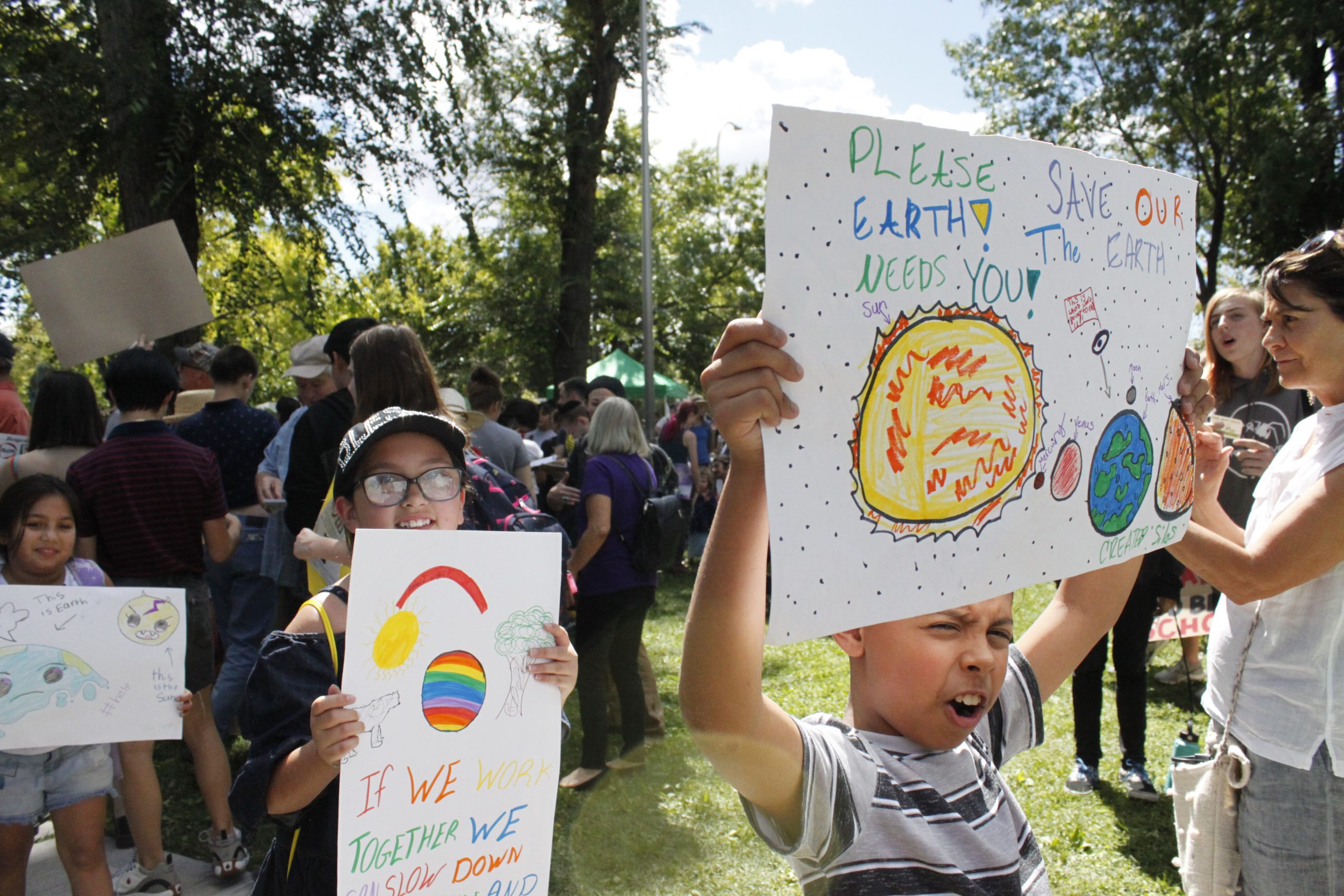By Susan Dunlap / NM Political Report
Children are at greater risk to pollutants and various deleterious effects caused by climate change, including behavioral health risks, a new report found.
Aspects of climate change, such as increased wildfire, extreme heat, air and water pollution, have a larger impact on children than adults, according to the report compiled by New Mexico Voices for Children.
Children’s bodies and immune systems are still developing and they drink more water and breathe in more air per body weight than adults. This makes them more susceptible to contamination, the report contends.
New Mexico Voices for Children released the report at the end of July, which the United Nations declared to be the hottest on record before the month came to an end.
July was the hottest month in New Mexico history by nearly two degrees in average temperature since record keeping began in 1891.
Divya Shiv, New Mexico Voices for Children research and policy analyst, said the intersection between climate change and health cannot be understated.
“As we’re experiencing extreme heat throughout New Mexico, we’re looking at how it impacts health and especially children, who are particularly vulnerable,” she said.
She said policy makers need to be having these conversations right now.
“Climate change is only exacerbating these extreme weather events,” she said.
Children who are exposed to contamination have an increased risk for health consequences later in life, since the consequences of exposure can take years or decades to progress.
The effects can impact both physical as well as behavioral health. Shiv said that a recent global study found that close to half of the youth surveyed felt hopeless over climate change.
She said nearly half of the youth respondents said they experienced sadness and anxiety because of climate change. She said the youth surveyed also said governments are not doing enough to actively address climate change and reduce it.
In addition, children who survive a wildfire or flood can develop Post Traumatic Stress Disorder because of the trauma caused by such an event. Shiv said wildfires and flooding can be “incredibly destabilizing, force families to leave their homes and communities and create economic instability for the family.”
“It can be really terrifying for youth. Afterward they are dealing with the aftermath and suffer from worse mental health because of it,” she said.
Shiv said every single policy, no matter how incremental, is important in the effort to reduce or reverse climate change.
She noted that studies have found that when people are exposed to poor air quality, a variety of adverse outcomes can ensue, including asthma, negative birth outcomes for pregnant people and a reduction of lung function for newborns.
“But research finds that the effects of poor air quality are not permanent. Health improves if the pollution is reduced,” Shiv said.
The report highlights several policy changes New Mexico could make to reduce climate change impacts but the one that Shiv singled out was the Public Health and Climate Resiliency, a bill introduced into the legislature in 2023 but which did not make it through committee hearings.
Shiv said NMVC is working with legislators to decide what the bill might look like next year.
“Research from the report demonstrates how important it is to have a coordinated effort at the state, given that climate change is so interconnected,” Shiv said.
She said one recommendation is that New Mexico health practitioners become trained in climate change-related health risks and for state agencies to work together around these issues.
Shiv said climate change is an equity issue as neighborhoods in lower income communities are more likely to experience adverse effects of climate change but lack the resources to prepare for it or recover from it. She used as an example from the report that stated that 15 percent of New Mexico homes have cooling units, which can make periods of record-setting heat life-threatening for young children and seniors, in particular, since they are the most vulnerable to heat and its impacts.
Another instance of climate change as an equity issue are Native Americans who have greater likelihood of high blood pressure, which makes extreme heat particularly dangerous. Native Americans are also some of the most climate-impacted populations in the U.S. due to extreme poverty, according to the report.
For urban youth, heat islands, which are more likely to exist in lower income neighborhoods due to a lack of tree or vegetation coverage, are another example of climate change as an equity issue. Heat islands can make extreme heat temperatures feel even hotter and increase the rate of heat-related illnesses and heat-related deaths, Shiv said.
While climate change issues are all interconnected, Shiv said another major policy advance NMVC seeks is to reduce the state’s dependence on the oil and gas industry, which contributes billions to the state’s coffers.
Shiv said the harm of climate change comes in the fact that all the issues are interrelated.
“Having conditions for drought, we’re more likely to see more wildfires. That worsens air quality; we see poor air quality and that connects to extreme heat. It’s hard to pick out one issue. It’s all linked to climate change,” she said.
